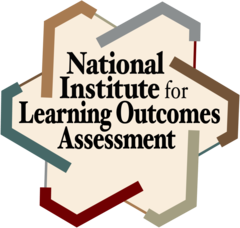Introduction
Gathering evidence of academic accomplishment – the knowledge, skills and competencies students gain as a result of their college experience – is a continuous process. It occurs at various levels and across many dimensions, and the findings are intended to enable institutions to make improvements, assess the impact of changes in academic programs and provide evidence of learning outcomes to those to whom they are accountable. The Transparency Framework addresses the question: How might these efforts be made more visible? One avenue adopted by many campuses is to share relevant information about student learning on the institutional website.

The National Institute for Learning Outcomes Assessment (NILOA) has developed a Transparency Framework to support institutions in sharing evidence of student learning on and off campus. The Framework is based on a review of institutional websites and identifies six key components of student learning assessment. Institutions may use the Framework to examine their institutional websites to gauge the extent to which evidence of student accomplishment is readily accessible and potentially useful and meaningful to the intended audience. Each section of the Framework suggests a component of student learning assessment that may be of interest to specific audiences and outlines opportunities to advance public understanding.
Components of Student Learning Assessment
Student Learning Outcomes Statements - Student learning outcomes (SLOs) statements clearly state the expected knowledge, skills, attitudes, competencies, and habits of mind that students are expected to acquire at an institution of higher education.
Assessment Plans - Campus plans for gathering evidence of student learning might include institution-wide or program specific approaches that convey how student learning will be assessed, the data collection tools and approaches that will be used, and the timeline for implementation.
Assessment Resources - Assessment resources encompass information or training provided to faculty and staff to help them understand, develop, implement, communicate, and use evidence of student learning.
Current Assessment Activities - Current assessment activities include information on a full range of projects and activities recently completed or currently underway to gauge student learning, make improvements or respond to accountability interests.
Evidence of Student Learning - Evidence of student learning includes results of assessment activities. This may include evidence of indirect (e.g. surveys) and direct (e.g. portfolio) student learning as well as institutional performance indicators (e.g. licensure pass rate).
Use of Student Learning Evidence - This component represents the extent to which evidence of student learning is used to identify areas where changes in policies and practices may lead to improvement, inform institutional decision-making, problem identification, planning, goal setting, faculty development, course revision, program review, and accountability or accreditation self-study.
Source:
National Institute for Learning Outcomes Assessment. (2011). Transparency Framework. Urbana, IL: University of Illinois and Indiana University, National Institute for Learning Outcomes Assessment (NILOA). Retrieved from: https://www.learningoutcomesassessment.org/ourwork/transparency-framework/

